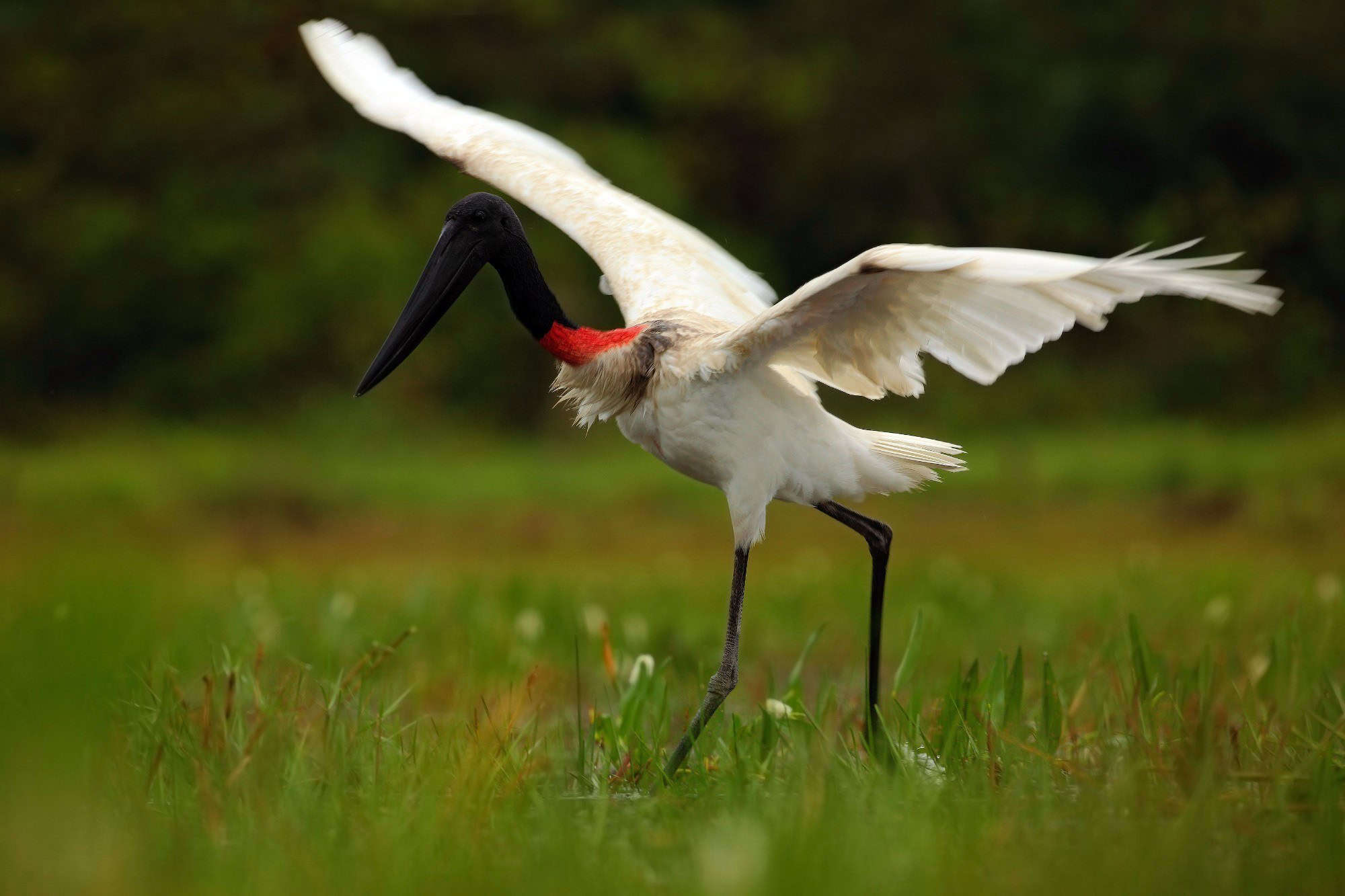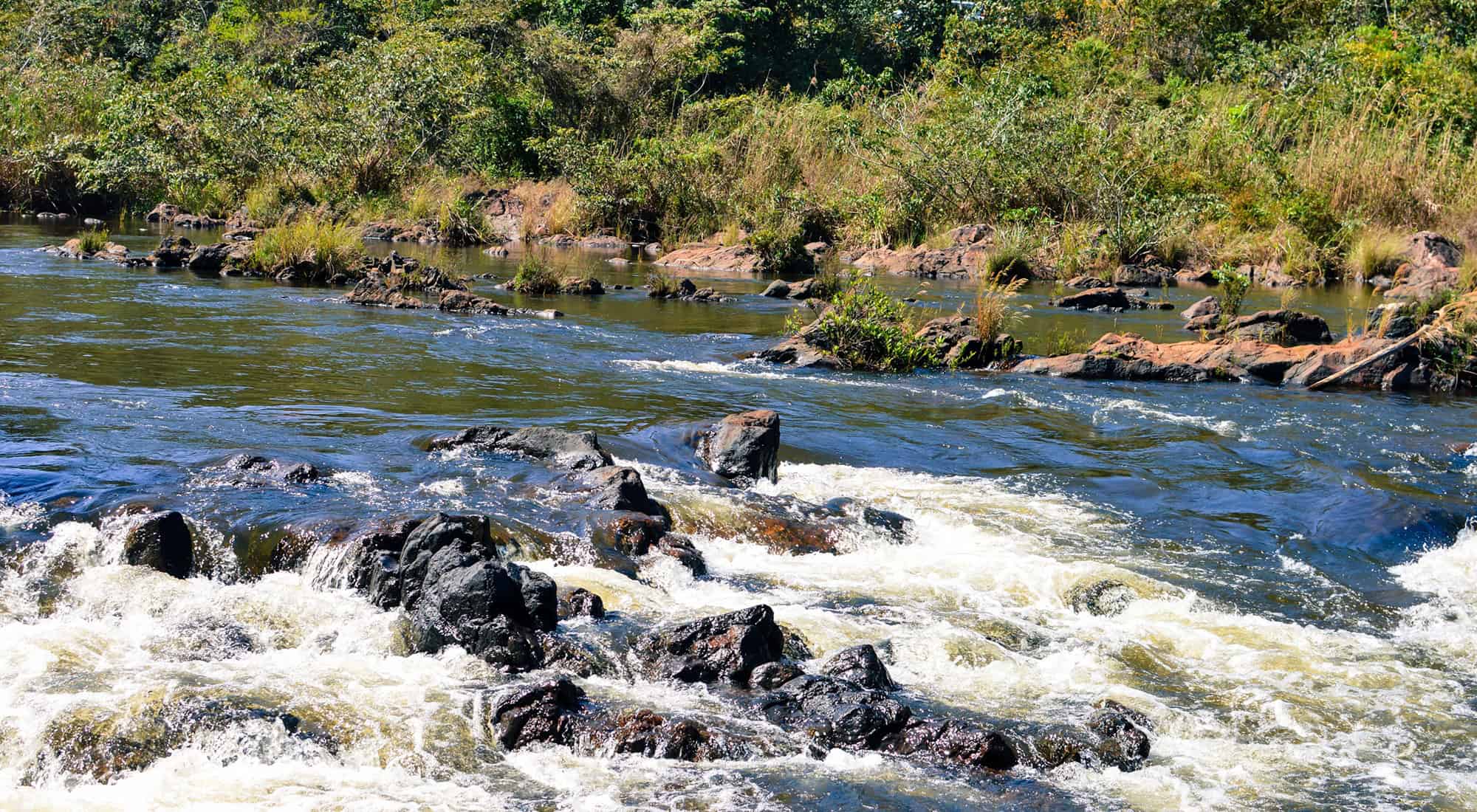Belize’s national bird is the largest flying bird in the Americas. Jabirus are found throughout the American tropics. They are unmistakeable – huge white birds on twig-thin legs, with black, bare heads, grotesque bills and a red neck ruff. You’ll see them in large groups in wetlands and on river banks from Argentina to Belize. Look out for their huge untidy nests in large trees near water. Australians and Asians sometimes mistakenly call their smaller black-necked stork, jabirus, but these birds are of an altogether different genus. Latin America can rightfully claim the stork and its name as their own.
Jabiru is an indigenous Brazilian animal name. The word jabiru is a corruption of iambyrú, meaning swollen throat in Tupi, the language of much of pre-Columbian coastal Brazil.
Large male jabirus may stand as much as 1.5 m tall and have a wingspan only marginally less than the Andean condor – at 3 m. Jabirus are opportunistic feeders, ploughing their huge bills through the water in search of small fish
and crustaceans. They’ll eat rodents too, and the storks can occasionally be seen snapping up mice in agricultural fields.
Jabirus are protected in Belize. They can most easily be seen between late May and late July at Crooked Tree, where they nest.










